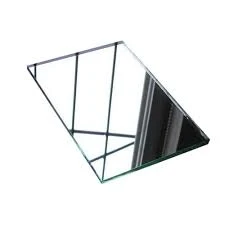

From Clear to Frosted Glass A Journey of Transformation in Design
Glass has been a quintessential material in architecture and interior design for centuries, revered for its transparency and ability to invoke a sense of openness. Yet, in recent years, a new trend has emerged, shifting the focus from the clarity of glass to frosted glass, which offers a delicate balance of privacy and light diffusion. This evolution in design reflects broader changes in societal values, aesthetics, and functionality.
The Allure of Clear Glass
Clear glass has its roots in traditional architectural design, where it was celebrated for its ability to create seamless connections between indoor and outdoor spaces. It allows for an abundance of natural light, enhancing the ambiance of a room and promoting a sense of spaciousness. Architects and designers often use large panes of clear glass to showcase stunning views, creating a strong visual link to the environment outside. Homes with expansive clear glass facades can seem almost transparent, inviting nature inside and blurring the boundaries of living spaces.
However, while clear glass offers unparalleled visibility, it comes with a few drawbacks. One significant concern is privacy. In urban environments, where homes are closely situated, the need for seclusion can make clear glass impractical. Furthermore, the unyielding transparency of clear glass can lead to invasions of personal space, where every movement within a home or office is exposed to onlookers.
The Shift to Frosted Glass
Enter frosted glass, a transformative solution that addresses many of the shortcomings of its clear counterpart. Frosted glass is created through various methods, including sandblasting, acid etching, or applying a film to the glass surface. The resulting texture diffuses light, creating a soft, inviting glow while obscuring visibility. This makes frosted glass an ideal choice for spaces that require a degree of privacy, such as bathrooms, conference rooms, and even residential entries.
The transition from clear to frosted glass not only serves functional purposes but also contributes to the aesthetic appeal of a space. Frosted glass adds an element of sophistication and modernity, often imparting a sense of tranquility. The diffusion of light can create a calming atmosphere, softening stark shadows and reducing glare. In a world that often feels overstimulated, frosted glass offers a serene respite.

Applications of Frosted Glass in Design
Frosted glass has found its way into various architectural and design applications. In residential buildings, it adorns sliding doors, windows, and partitions, providing privacy while still allowing natural light to filter through. It can be utilized in shower enclosures, enabling a luxurious feel without compromising on seclusion.
Commercial spaces, too, have embraced frosted glass as a tool for branding and identity. Companies use frosted glass to create striking visual displays in lobbies or meeting rooms. The semi-opaque nature of frosted glass allows businesses to display logos or signage without overwhelming the space. Additionally, it can diffuse artificial lighting, creating a comfortable work atmosphere that promotes productivity and well-being.
Sustainability and Innovation
As we move forward, the sustainability of materials is becoming increasingly important in architectural design. Frosted glass is no exception to this trend. Many frosted glass manufacturers are focusing on eco-friendly practices, using recycled materials and sustainable production methods. Furthermore, the energy efficiency of glass technology continues to improve, allowing for better insulation and reduced energy costs.
Incorporating frosted glass into a building’s design not only upgrades aesthetics and functionality but also aligns with a growing consciousness around environmental impact. As we look towards the future of architecture and interior design, it appears that the journey from clear to frosted glass is one of both necessity and innovation.
Conclusion
The evolution from clear to frosted glass represents much more than a mere change in aesthetics; it signifies a shift in how we perceive and interact with our environments. By marrying transparency with privacy and light diffusion, frosted glass offers a comprehensive solution that caters to modern needs. As designers and architects explore this versatile material, we can anticipate a future where frosted glass plays a crucial role in creating spaces that are not only visually stunning but also harmonious and functional. This journey embodies a deeper understanding of our relationship with space, light, and the ever-important need for privacy in an increasingly public world.